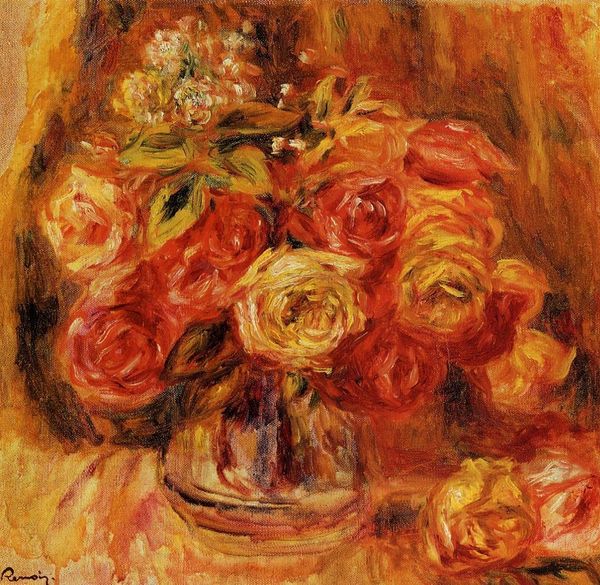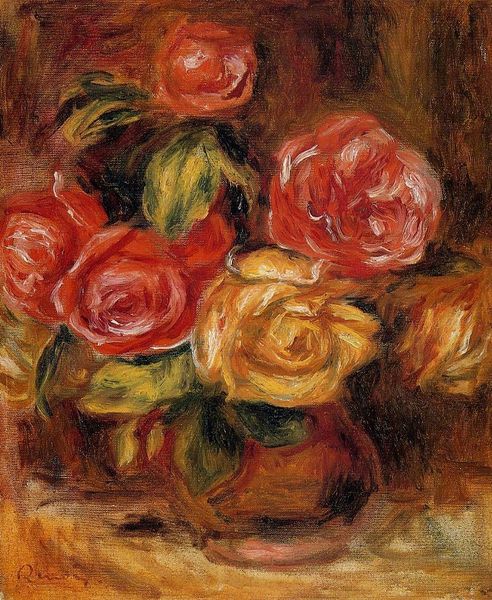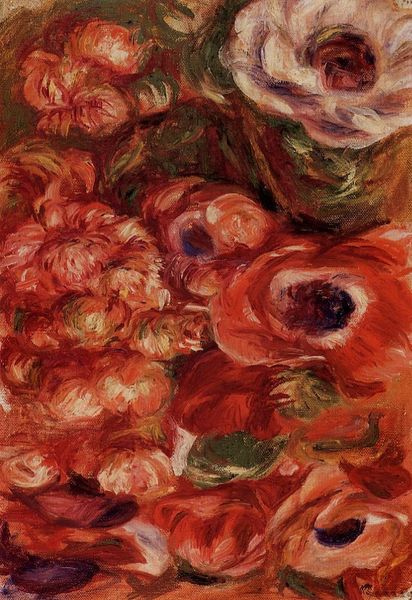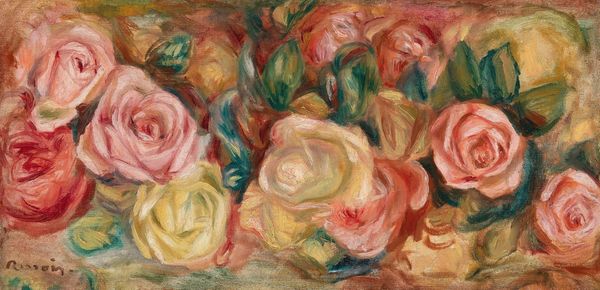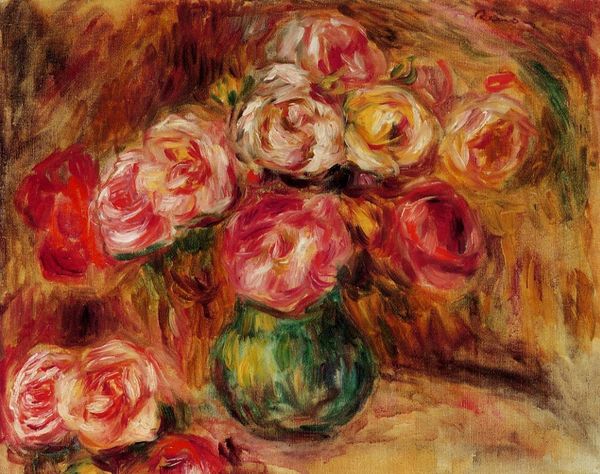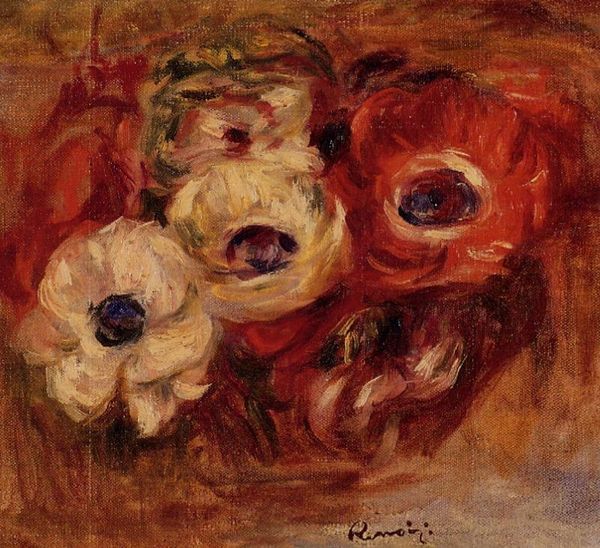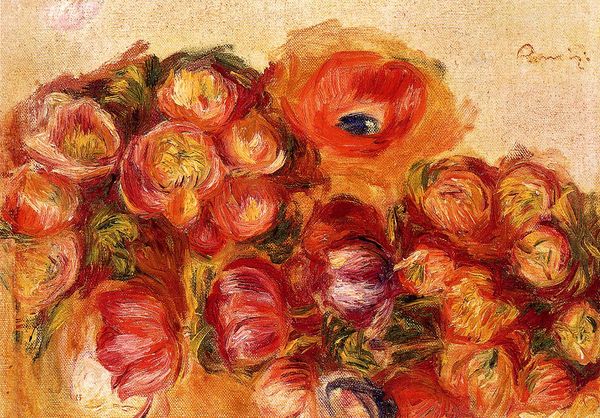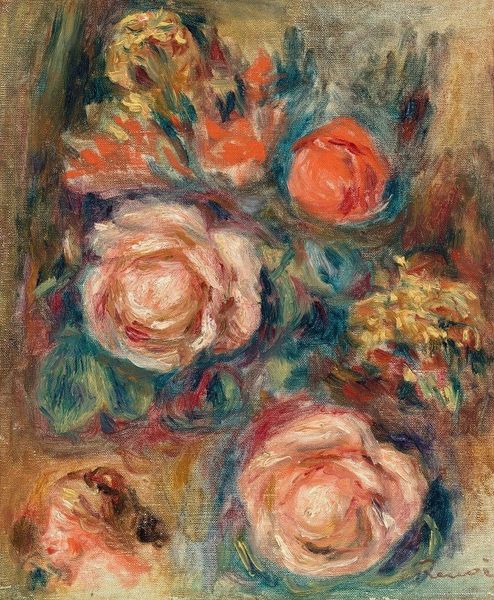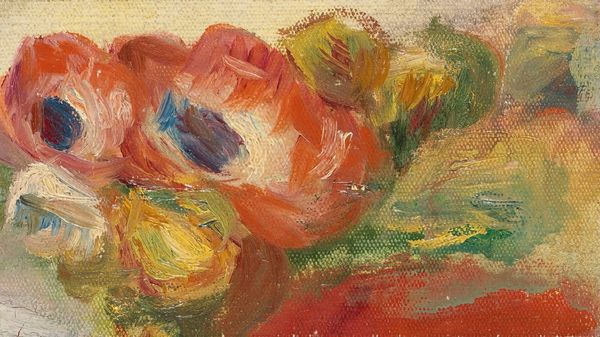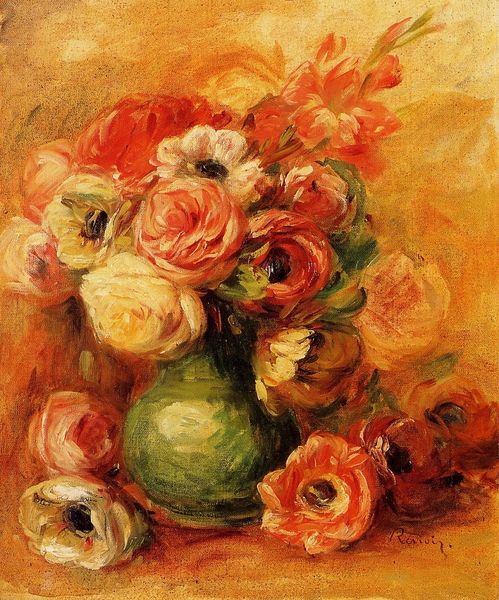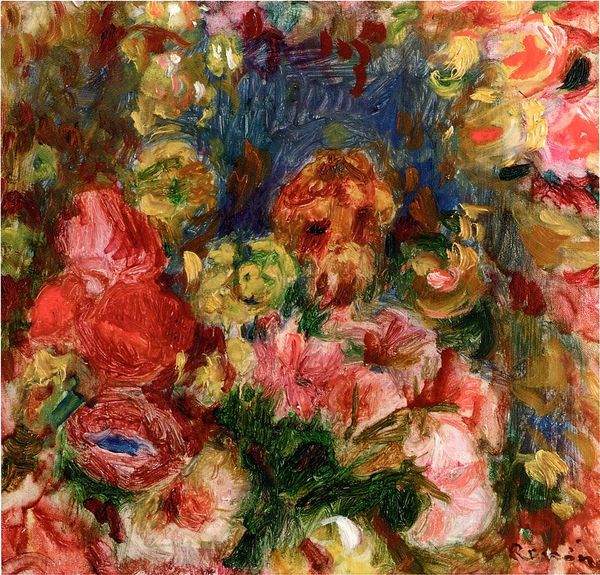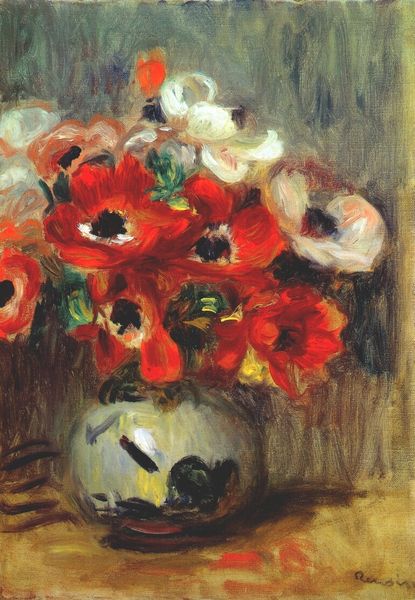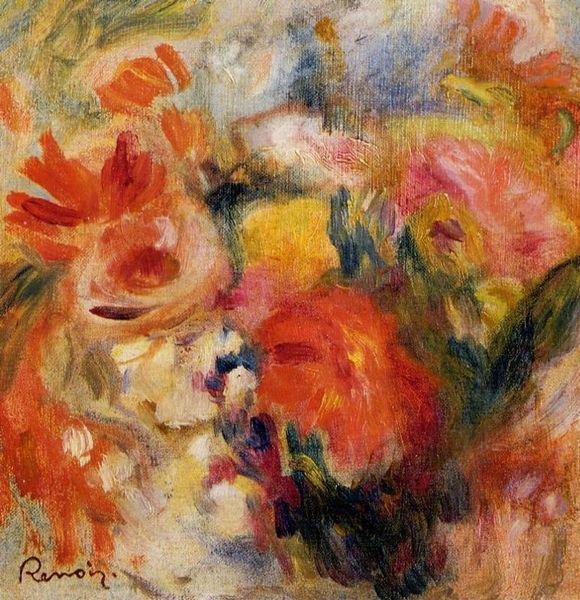
painting, plein-air, oil-paint
#
painting
#
impressionism
#
plein-air
#
oil-paint
#
impressionist landscape
#
oil painting
#
watercolor
Copyright: Public domain
Curator: This is "Vase of Anemones", an oil painting, thought to be made by Pierre-Auguste Renoir in his later years. It resides in a private collection, so opportunities to see it in person are, unfortunately, rare. Editor: Well, the first thing that strikes me is the sheer warmth emanating from it! The predominance of reds and yellows gives it an almost autumnal feel, even though anemones bloom in the spring. Curator: It's interesting that you mention warmth. Renoir was, of course, a master of capturing light and atmosphere, part of the Impressionist style. But I'm drawn to how he uses the flowers themselves—the anemones—as potent symbols. Editor: Symbols of what, specifically? They seem a bit straightforward to me: pretty flowers in a vase. Curator: Ah, but anemones carry complex symbolism. In some traditions, they represent anticipation or even forsaken love. They are tied to Greek myths, such as Adonis's blood transforming into the flower. It’s a flower imbued with transience and remembrance. It adds a melancholic depth, don’t you think? Especially coupled with the almost dissolving quality of the brushstrokes, reflecting the later phase of his painting life and possibly his increasing awareness of mortality. Editor: I can see that perspective. Viewing it through the lens of mortality brings out nuances I didn’t initially detect. Do you think the way Impressionism captured the ephemeral contributed to how this piece was received then? How might these connotations of death influence people's engagement with this piece today? Curator: Absolutely, Renoir's embrace of fleeting impressions is part of what makes it timeless. His later period was marked by a shift from landscapes of leisure towards these more intimate, psychologically-rich still lifes. And yes, viewers have certainly grappled with it differently, particularly considering shifting social attitudes towards representations of death, the legacy of loss after major wars and the value attached to life across societal groups. The art world certainly contributes towards defining it. Editor: It almost acts as a meditation, not just on the beauty of the flowers, but on their brief existence and what they represent about the fleeting nature of our own lives. It’s pretty heavy, considering the warm palette. Curator: Precisely. And the enduring appeal is its capacity to engage us across time, stirring emotions, prompting reflections, as a touchstone in an ocean of human existence. Editor: A good reminder to appreciate the small moments and the beauty around us, fleeting as they may be.
Comments
No comments
Be the first to comment and join the conversation on the ultimate creative platform.
